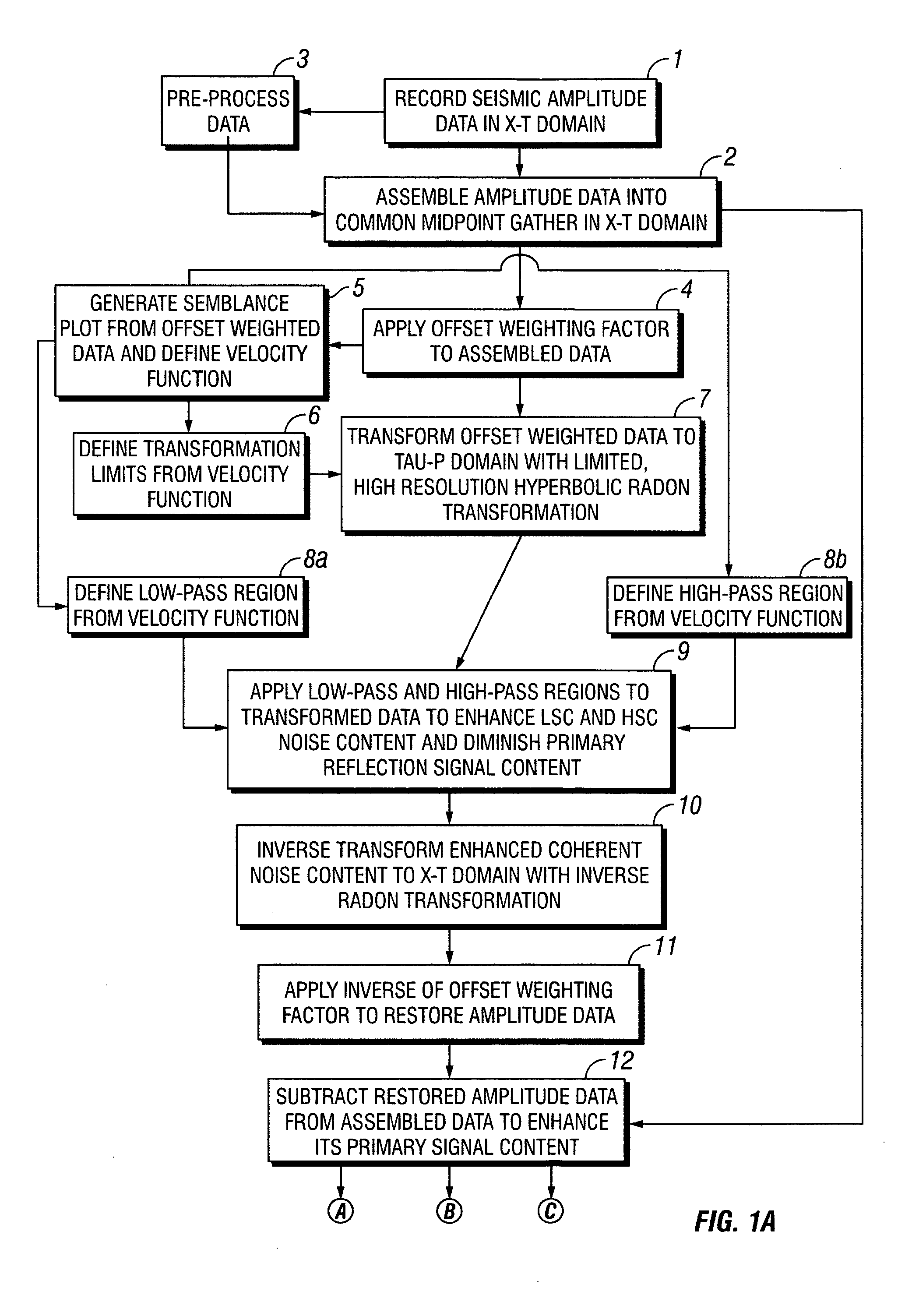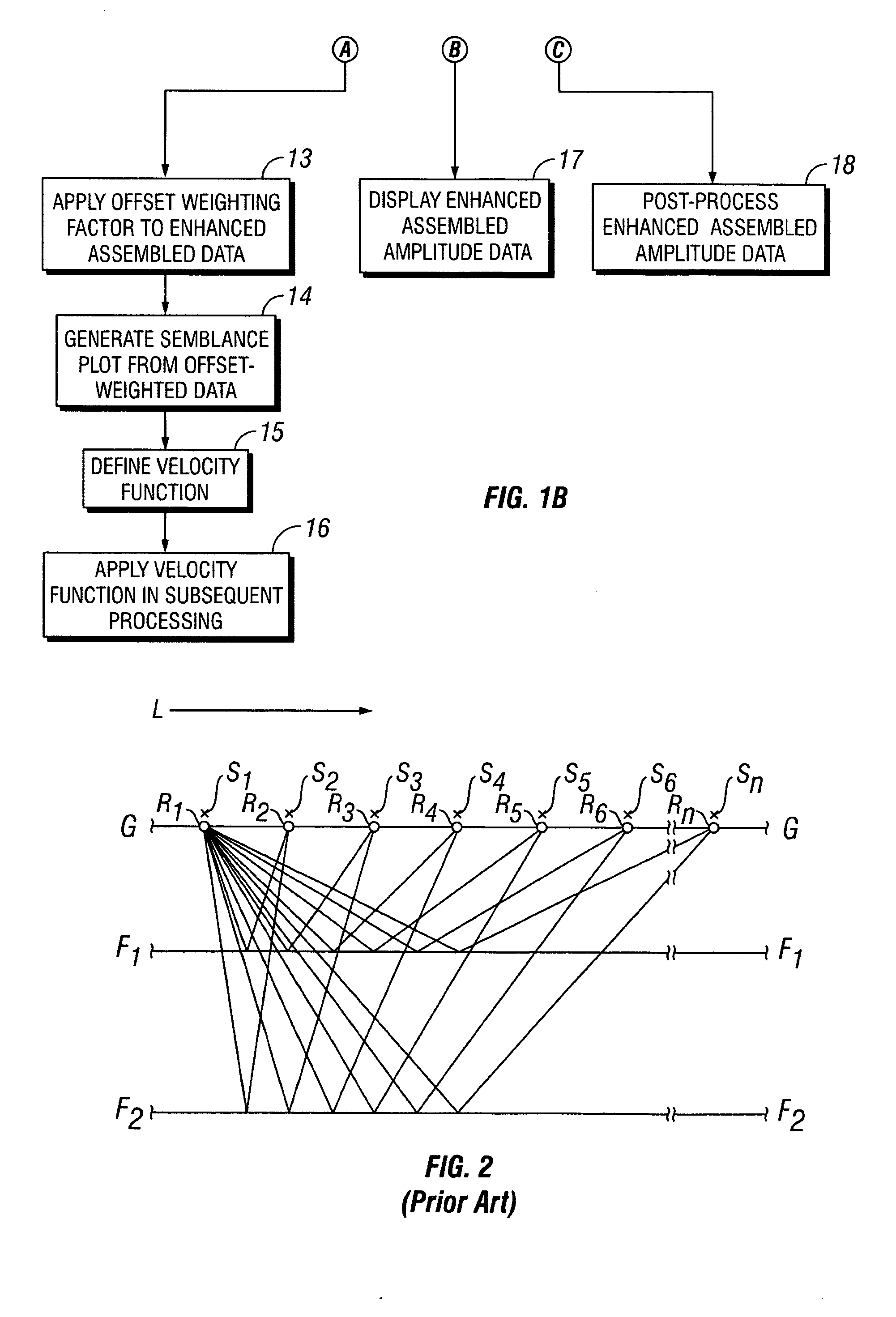Radon transformations for removal of noise from seismic data
- Summary
- Abstract
- Description
- Claims
- Application Information
AI Technical Summary
Benefits of technology
Problems solved by technology
Method used
Image
Examples
Embodiment Construction
[0058] The subject invention is directed to improved methods for processing seismic data to remove unwanted noise from meaningful reflection signals and for more accurately determining the stacking velocity function for a set of seismic data.
Obtaining and Preparing Seismic Data for Processing
[0059] More particularly, the novel methods comprise the step of obtaining field records of seismic data detected at a number of seismic receivers in an area of interest. The seismic data comprise amplitude data recorded over time and contain both primary reflection signals and unwanted noise events.
[0060] By way of example, a preferred embodiment of the methods of the subject invention is shown in the flow chart of FIG. 1. As shown therein in step 1, seismic amplitude data are recorded in the offset-time domain. For example, such data may be generated by a seismic survey shown schematically in FIG. 2.
[0061] The seismic survey shown in FIG. 2 is a two-dimensional survey in offset-time (X-T) ...
PUM
 Login to View More
Login to View More Abstract
Description
Claims
Application Information
 Login to View More
Login to View More - R&D
- Intellectual Property
- Life Sciences
- Materials
- Tech Scout
- Unparalleled Data Quality
- Higher Quality Content
- 60% Fewer Hallucinations
Browse by: Latest US Patents, China's latest patents, Technical Efficacy Thesaurus, Application Domain, Technology Topic, Popular Technical Reports.
© 2025 PatSnap. All rights reserved.Legal|Privacy policy|Modern Slavery Act Transparency Statement|Sitemap|About US| Contact US: help@patsnap.com



